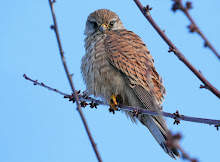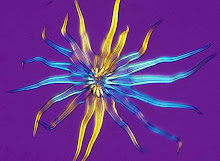If you're small, edible and confronted with a hungry carnivore your options are few. You can keep very still and hope you won't be noticed, run or take the bold option - stand your ground and try to intimidate your tormentor, which is exactly what this elephant hawk-moth Deilephila elpenor caterpillar did when I poked it with a grass stem. We found it in late afternoon (Deilephila means 'lover of evening') on the fellside near Blanchland in the Derwent valley, where it was climbing a rose-bay willowherb stem in preparation for another night's feeding.
The caterpillar was over three inches long, close to being fully fed. Notice the curved tail spike (not very menacing) and the four distinctive eye spots at the other end, which begin to become more menacing when the caterpillar realises it's under threat.
At that point it retracts its front three segments (that are longer and narrower than the others and have some resemblance to an elephant's trunk when it's feeding. This concertina-like contraction forces segments four and five, immediately behind and marked with the eye spots, to swell ............ and now those 'eyes' begin to look much more intimidating.....
.... especially when you look at it from this end, where you can compare its comparatively small real head with the false head formeed by swollen segment four.
Provoke it a little more and it will release its grip with the true legs at the front and, clinging on with pro-legs at the rear, wriggle violently like a snake. At this point its attacked will either be preparing to eat it anyway or will have been sufficiently intimidated to look elsewhere for a meal.
This is the commonest hawk-moth in the UK. You can find images of the adult insect at the excellent UK Moths web site.


































